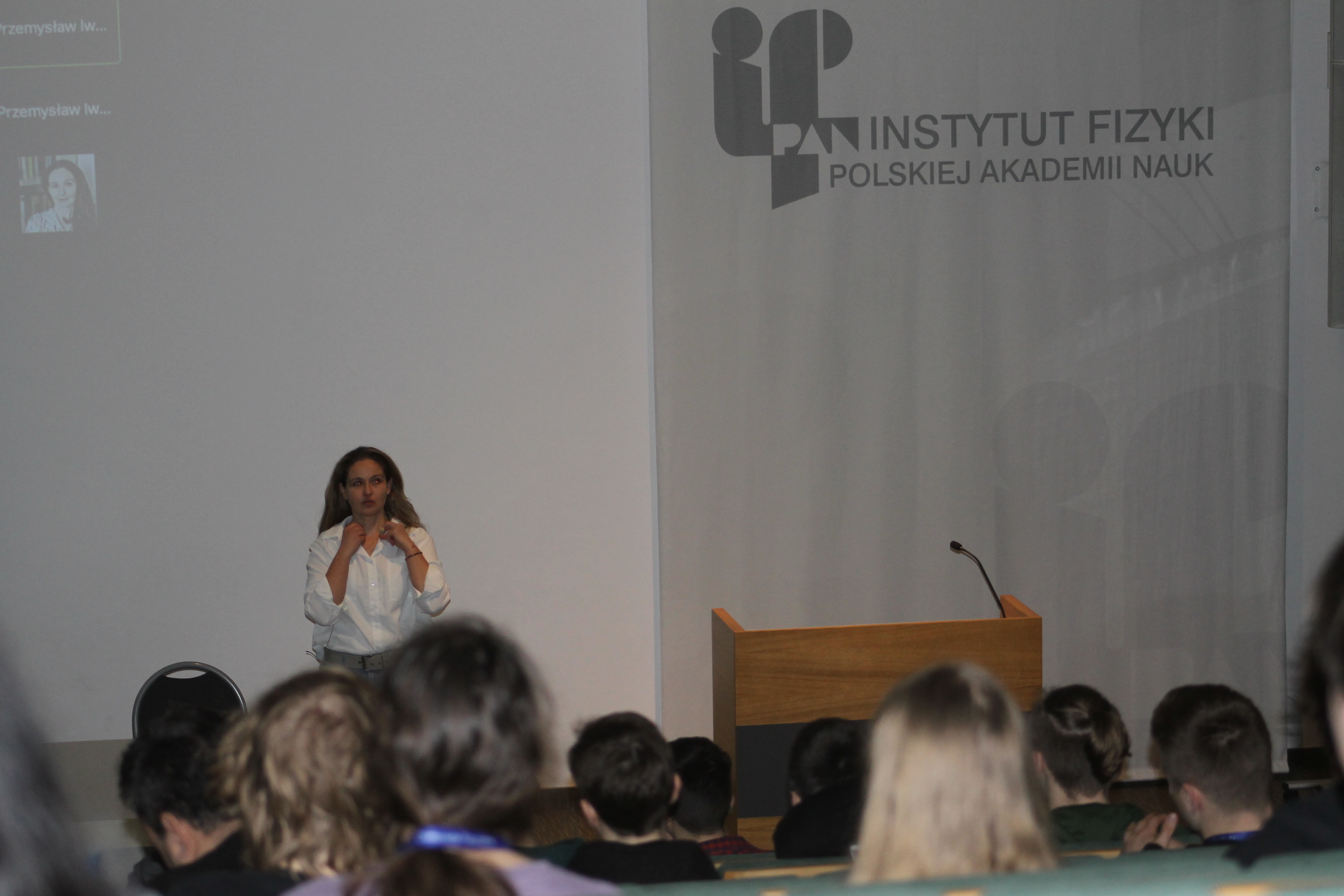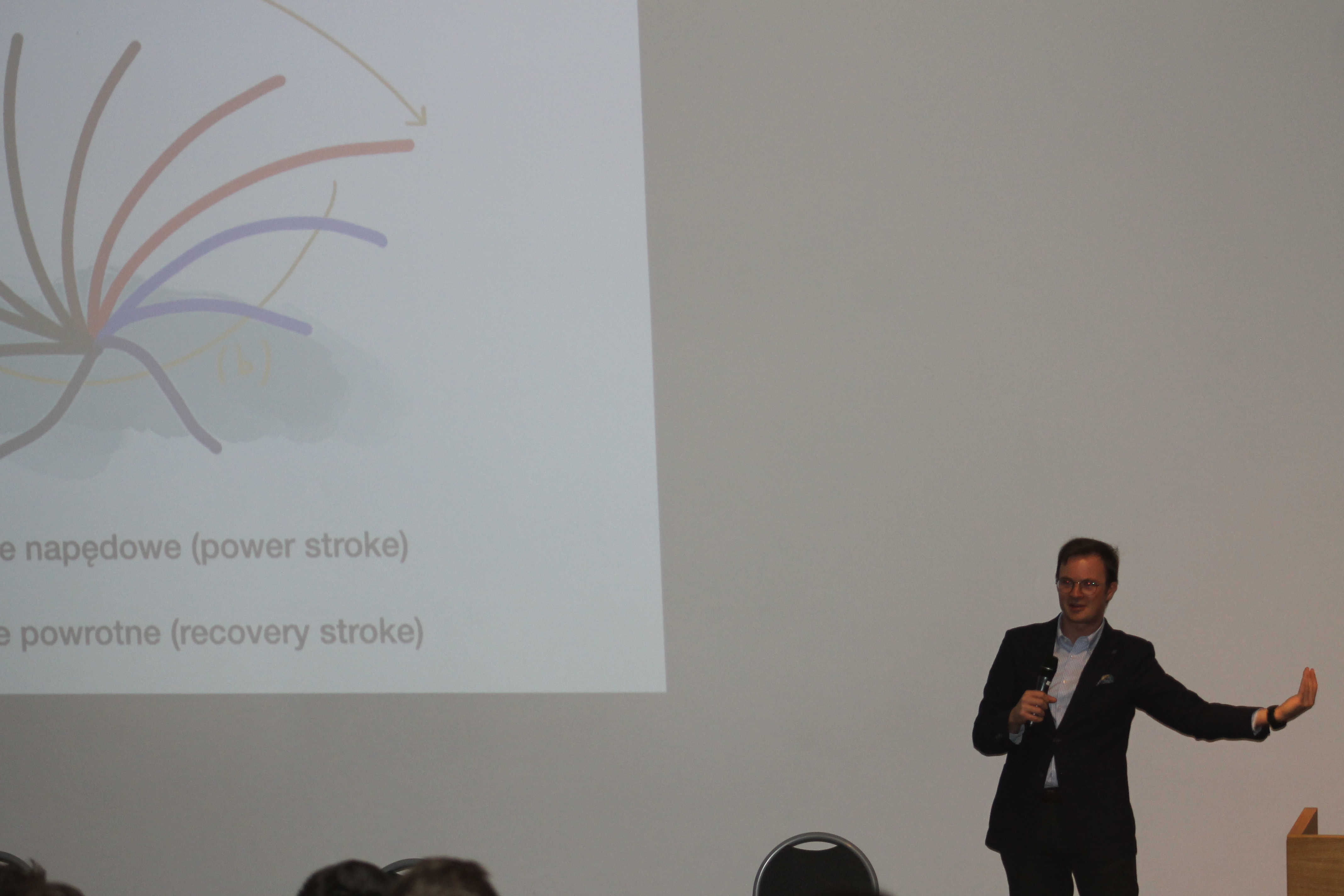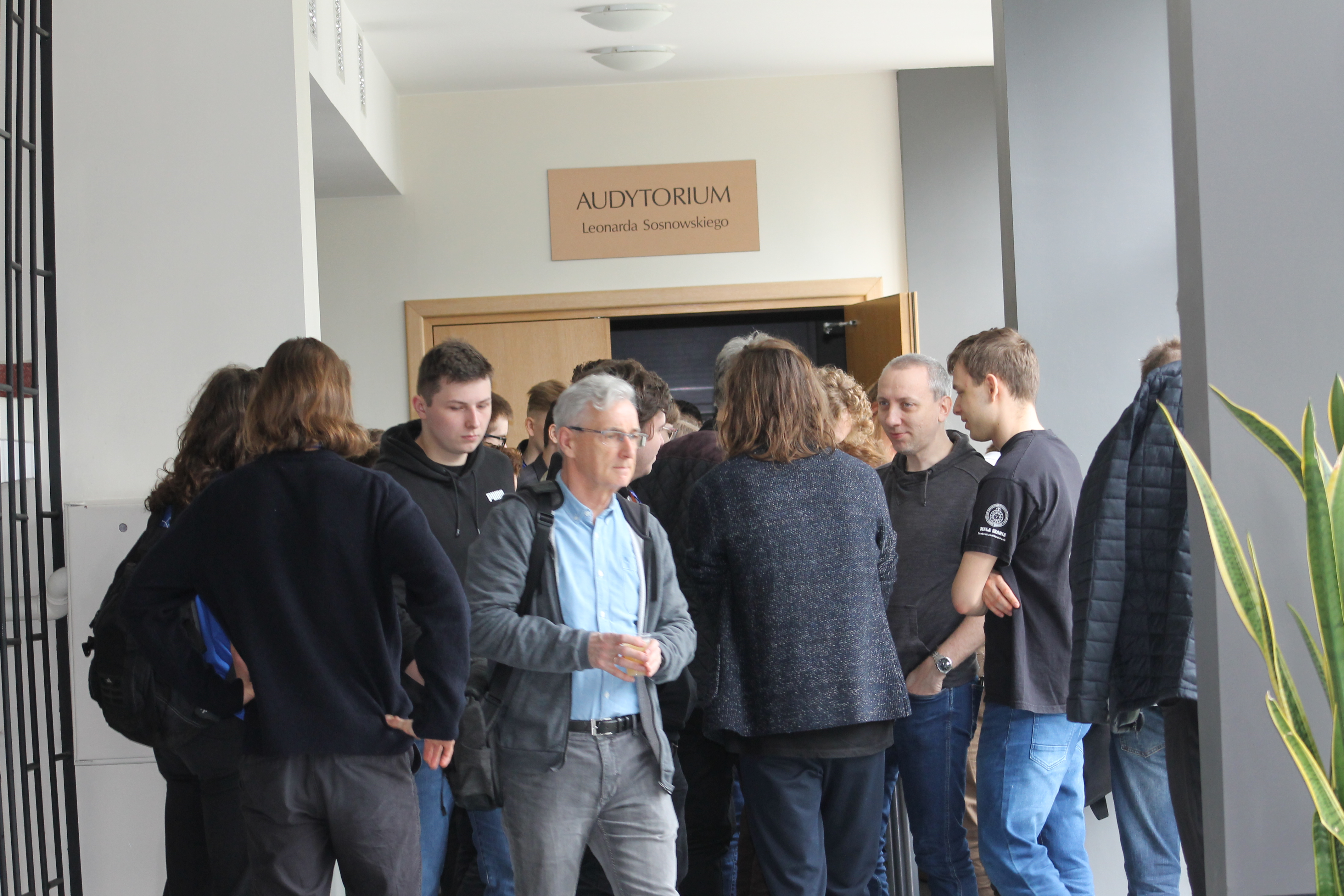Institute of Physics PAS

On Monday, April 17th, Scientific Lectures for the finalists of this year's Physics Competition took place in the Leonard Sosnowski Auditorium. The meeting was educational in nature and was organized for the finalists of this year's competition, who are part of the organizing committee of the Physics Competition. The entire event was supervised by the host, Professor Jan Mostowski, Deputy Chairman of the Main Committee of the Physics Competition.

Professor Magdalena Załuska-Kotur warmly welcomed the participants of the Physics Olympiad. In her speech, she emphasized the importance of participating in the competition as an excellent opportunity to develop knowledge in physics and encouraged young people to pursue further activities in this field. She pointed out that the knowledge gained in this way could be a great introduction to a scientific career, and in the future, some participants may become employees of the Institute of Physics of the Polish Academy of Sciences.
The lectures were conducted by Dr. Barbara Piątka, Dr. Maciej Lisicki, and Dr. Tomasz Sowiński, who presented interesting topics from the field of physics to the participants. In addition to the finalists of the third stage of the Competition, the lectures were also attended by their supervisors and invited employees of the Institute of Physics of the Polish Academy of Sciences. Present at the lectures professors nostalgically recalled their own participation in such events several decades ago when they were young participants of the Physics Competition.
The topics of the lectures were very diverse and covered the latest issues in physics:

Dr. Barbara Piątka delivered a lecture entitled 'From Bose-Einstein Condensates to Artificial Neurons'. Bose-Einstein condensates are a state of matter in which many quantum particles (such as atoms or molecules) behave as if they were one large "supraparticle". Such a state allows for the observation of interesting effects such as tunneling. On the other hand, artificial neurons are units that process information in artificial neural networks. These models are inspired by biological neurons but operate on the basis of mathematical functions that transform input into output. They can be used to solve various problems, such as image recognition or predicting financial results. Although these seem to be two completely different topics, there are actually connections between them. For example, neural networks are used in research on Bose-Einstein condensates to analyze complex experimental data. Discoveries from these fields of science are important for the development of future technologies such as superconductors or artificial intelligence.

The second lecture presented by Dr. Maciej Lisicki, titled "On viscosity and swimming at the microscale," focused on topics related to fluid dynamics. At the microscale, the viscosity of liquids and gases can have a significant impact on swimming processes. For example, microscopic organisms such as plankton and bacteria typically move by swimming in fluid. In this case, the viscosity of the fluid affects the resistance that the organism must overcome to move. High viscosity can increase resistance, making it difficult to move in the fluid. Additionally, at the microscale, the effects of swimming can differ significantly from those at the macroscale. For example, microscopic particles in water experience random Brownian motions that can lead to unusual behaviors, such as swimming against the current. These effects are often referred to as "microscopic movements," which play an important role in biological processes such as transporting substances into cells and flushing waste out of the body.

The last lecture given by Dr. hab. Tomasz Sowiński titled "Investigating Antimatter with Atomic Precision" presented the participants with the theoretical foundations and experimental results related to the study of antimatter. Investigating antimatter with atomic precision is an important area of physics research that can help to understand the differences between matter and antimatter and their mutual interactions. Antimatter is made up of antiparticles that have an opposite electric charge and magnetic properties to ordinary particles. In studies using atomic precision, scientists try to carry out precise measurements and experiments using antimatter to understand its properties and behavior. The speaker introduced the participants to the AEgIS project (AEgIS project website) in which he is involved.
 |
 |
 |
Contact with scientists and the opportunity to ask questions is certainly an added value of the series of scientific lectures for finalists of the Physics Olympiad. During the lectures, participants had the opportunity to ask questions, which allowed for clarification of uncertainties and resolution of any doubts. Such a dialogue between scientists and the audience allows for a better understanding of the presented topics and the opportunity to learn about different perspectives and points of view. In addition, breaks between lectures provide an ideal opportunity for more personal contact with scientists, who can answer additional questions and discuss topics in more detail. Such conversations enable the acquisition of valuable tips and interesting suggestions regarding further actions towards better understanding of physics concepts.
Shortcuts
© 2022 IF PAN. Realizacja Sensorama

